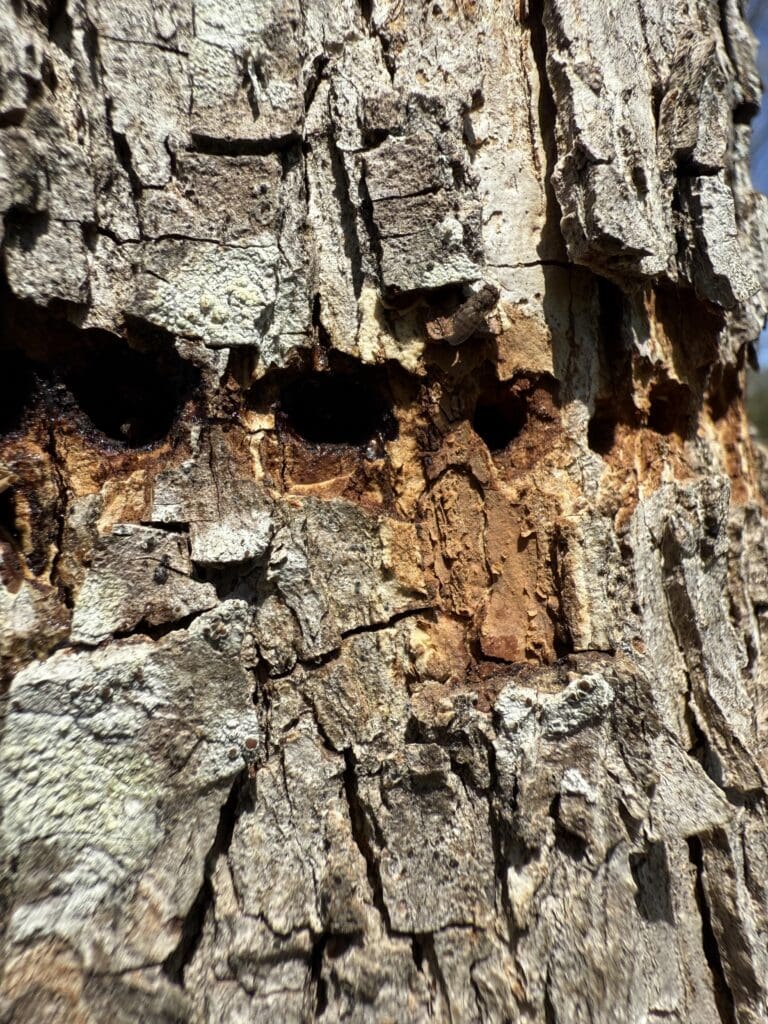Pecan Tree Signs of illness
Is Your Pecan Tree in Echo Feeling Under the Weather? A Guide to Identifying and Addressing Tree Sickness
Pecan tree signs of illness. Pecan trees are a magnificent sight in Echo, Louisiana (CenLA), gracing landscapes from Pineville and Alexandria to Poland and Fifth Ward. Their bountiful harvests and shade-giving presence are highly valued. But what happens when your beloved pecan tree starts looking a little… off? Determining if your pecan tree is sick is crucial for its long-term health, safety, and the preservation of your property value. This article will guide you through identifying pecan tree signs of illness and what steps you can take to address the issue.

Recognizing the Signs:
Echo, Louisiana, Is Your Pecan Tree Trying to Tell You Something? Just like humans, trees can suffer from various ailments. Catching the signs early is key to effective treatment. Here are some key indicators to watch out for:
- Discolored Leaves: Healthy pecan tree leaves in Rapides Parish should have a vibrant green hue. Yellowing, browning, or spotting on the leaves can indicate nutrient deficiencies, fungal infections, or pest infestations.
- Dead or Dying Branches: While some minor twig dieback is normal, an excessive amount of dead or dying branches is a serious concern. These branches pose a falling hazard and indicate a problem affecting the tree’s vascular system.
- Peeling or Loose Bark: Bark is a tree’s protective layer. Peeling, cracking, or loosening bark can expose the tree to insects and diseases. This is especially concerning if the bark is falling off in large chunks.
- Cracks in the Trunk: Deep cracks in the trunk can weaken the tree’s structural integrity, making it susceptible to wind damage. These cracks can also be entry points for pests and diseases.
- Fungal Growth or Unusual Growths: The appearance of mushrooms, shelf-like fungi, or unusual growths on the trunk or branches signals fungal infection and decay. These growths can weaken the tree and lead to its eventual decline.
Pecan Tree Care: Best Practices for a Healthy Tree in Rapides Parish
Proper care is essential for preventing illness and promoting the overall health of your pecan tree. Here are a few key aspects to consider:
- Pruning: While regular pruning is important, the best time to prune a pecan tree in Rapides Parish is in late winter or early spring, just before new growth emerges. This allows the tree to heal quickly and minimizes stress. Avoid pruning during the growing season, as it can weaken the tree and make it more susceptible to disease. A qualified, licensed arborist from HLA Tree Service in Hessmer, Louisiana, can provide experienced pruning services.
- Watering: Young pecan trees require regular watering, especially during dry periods. Mature trees are generally more drought-tolerant, but supplemental watering during extended droughts can still be beneficial. Water deeply and infrequently to encourage deep root growth.
- Fertilizing: Pecan trees benefit from regular fertilization to ensure they have the nutrients they need to thrive. The best time to fertilize is in early spring, before new growth begins. Use a fertilizer specifically formulated for pecan trees and follow the manufacturer’s instructions carefully. Soil testing can help you determine the specific nutrient needs of your tree.
Termites: A Sign of Underlying Problems
While termites don’t directly cause disease in trees, their presence is a red flag. Termites feed on deadwood, so they will only infest a tree that is already weakened or damaged. If you notice signs of termite activity, it’s crucial to have the tree inspected by a qualified professional to determine the underlying cause of the decay and address the termite infestation.
Why a Sick Tree is a Serious Concern
Ignoring a sick tree can have significant consequences:
- Safety Hazard: A weakened tree is more likely to fall during storms, posing a serious risk to surrounding structures, cars, and people.
- Property Value Depreciation: A diseased or dying tree can significantly detract from the aesthetic appeal of your property and lower its overall value.
- Spread of Disease: Untreated diseases can spread to other healthy trees in your landscape, jeopardizing their health as well.
When to Call a Professional:
HLA Tree Service in Hessmer, Louisiana
If you notice any of the signs of illness mentioned above, it’s essential to consult with a local licensed arborist or a reputable tree service like HLA Tree Service in Hessmer, Louisiana. A qualified professional can accurately diagnose the problem, recommend the appropriate treatment, and safely remove any dead or hazardous branches.
In conclusion, proactively monitoring your pecan trees in Rapides Parish for signs of illness and providing proper care are vital for its health and longevity. By understanding the warning signs and taking prompt action, you can protect your tree, your property, and the safety of those around you. Don’t hesitate to contact a professional arborist if you have any concerns about your pecan tree. They have the expertise to diagnose and treat tree problems, ensuring your magnificent pecan tree continues to thrive in the CenLA landscape for years to come.
